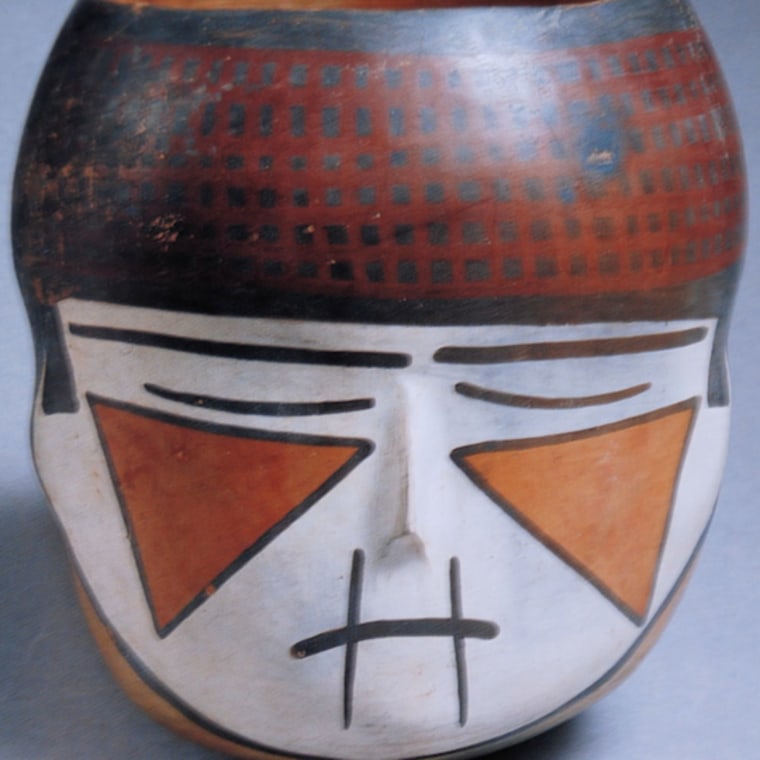The ancient South American people who carved the enigmatic Nazca Lines across the Peruvian desert some 1,500 to 2,000 years ago, literally lost their heads over spreading their puzzling culture, according to a recent analysis of specimens unearthed at various Andean archaeological sites.
The Nazca civilization, which flourished in Peru between the first century B.C. and the fifth century A.D. and slid into oblivion by the time the Inca Empire rose to dominate the Andes, is mostly known for carving in the desert hundreds of geometric lines and images of animals and birds that are best viewed from the air.
Less well known is that these ancient people boasted the largest collection of human heads in the Andes region of South America.
Carefully prepared, the lips sewed with long cactus spines, all heads featured a hole in the center of the forehead so that a carrying rope could be inserted.
Hanged and suspended from these woven cords, the heads were long believed to be war trophies.
But recent analysis of the diet-related substances found in the teeth of some heads unearthed in 1925, reveals that the Nazca built their collection not from foreign enemies slain in battles, but from their own people.
"Nazca pottery gives us very interesting information about the role of trophy heads, both in the hands of warriors and also in ritual activities, such as burials and ritual caches. We can use sophisticated laboratory techniques to answer very interesting questions about the past, even when the excavations took place almost 100 years ago," archaeologist and lead author Kelly Knudson of Arizona State University in Tempe, told Discovery News.
Published in the Journal of Anthropological Archaeology, the study examined 16 trophy heads of the Kroeber collection at Chicago's Field Museum of Natural History and 13 mummified bodies buried in the Nazca region.
Knudson and colleagues compared tooth enamel from the trophy heads with the mummified bodies.
The researchers looked for subtle differences in three elements — strontium, oxygen and carbon — found in the samples. These elements display slightly different atomic structures that vary by geographic location, basically reflecting where a person lived and what types of foods he or she consumed.
"You are what you eat, and the elements you consume become a part of your bones' chemical signature," explained Field Museum curator Ryan Williams.
Teeth from the trophy heads and from the mummified bodies showed no substantial differences in the ratios of these substances, showing that the trophy heads came from the Nazca themselves rather than from outsiders.
"Our data do not support the hypothesis that Nazca trophy heads were taken from enemy warriors from foreign locales...We argue that transforming local Nazca individuals into trophy heads highlights their ritual role," the researchers concluded.
However, the researchers do not completely rule out war as the source of the heads, since the heads could have been collected from warring in the Nazca area.
"It is possible that the role of the trophy heads changed over time. It is possible that these individuals were sacrificed, but we don't have any evidence for that," Knudson said.
Giuseppe Orefici, an archaeologist who has spent decades excavating Cahuachi, the Nazca's most important ceremonial center, is not surprised by the results of the biochemical study.
"In 26 years of digging at Cahuachi, we have never come across any head used as a war trophy.
We are rather talking of 'offering heads' used in rituals. They belong to people of both sexes and in most cases they have been buried inside the ceremonial center. The images of disembodied heads in pottery and textiles are either representations of myths or indicate the high social status of the people who carry them," Orefici told Discovery News.
